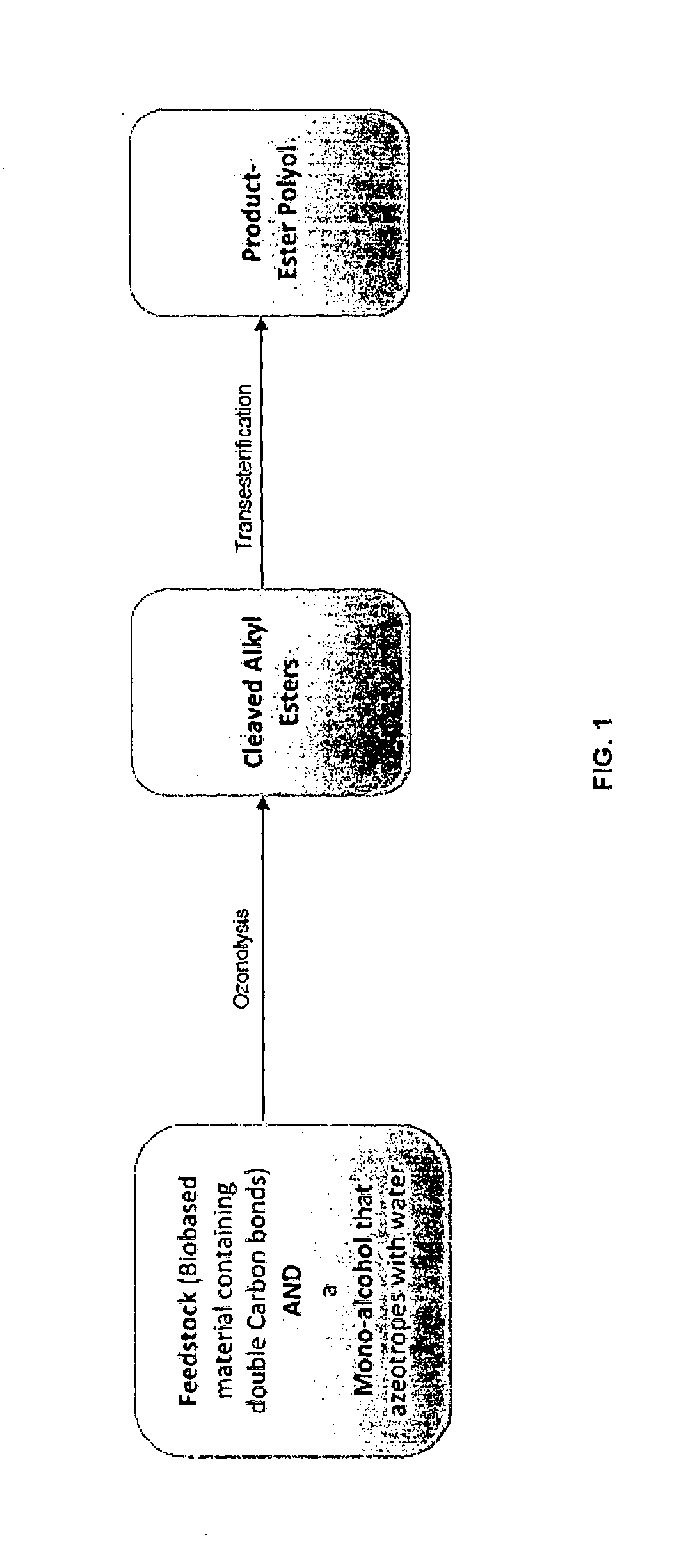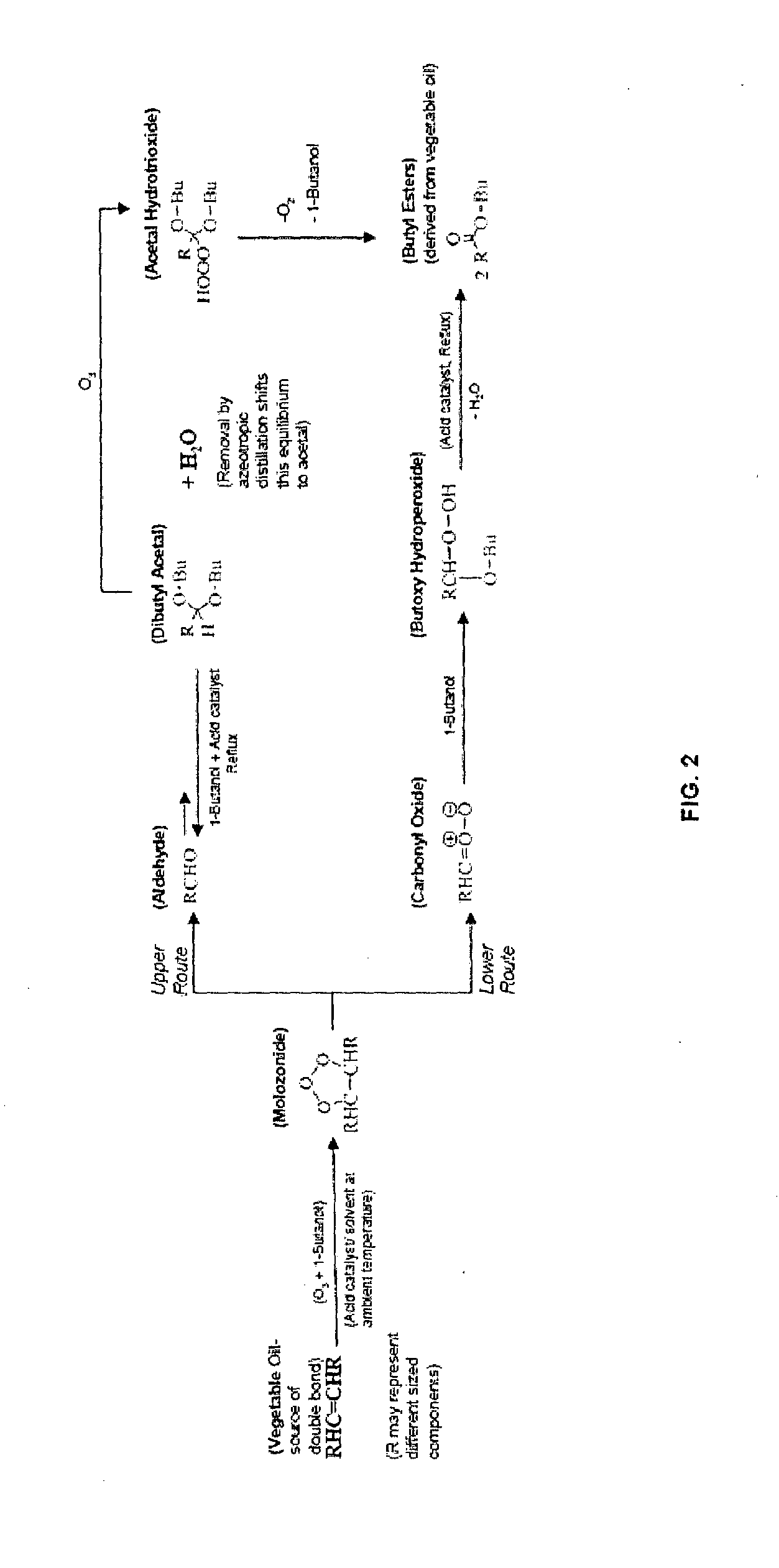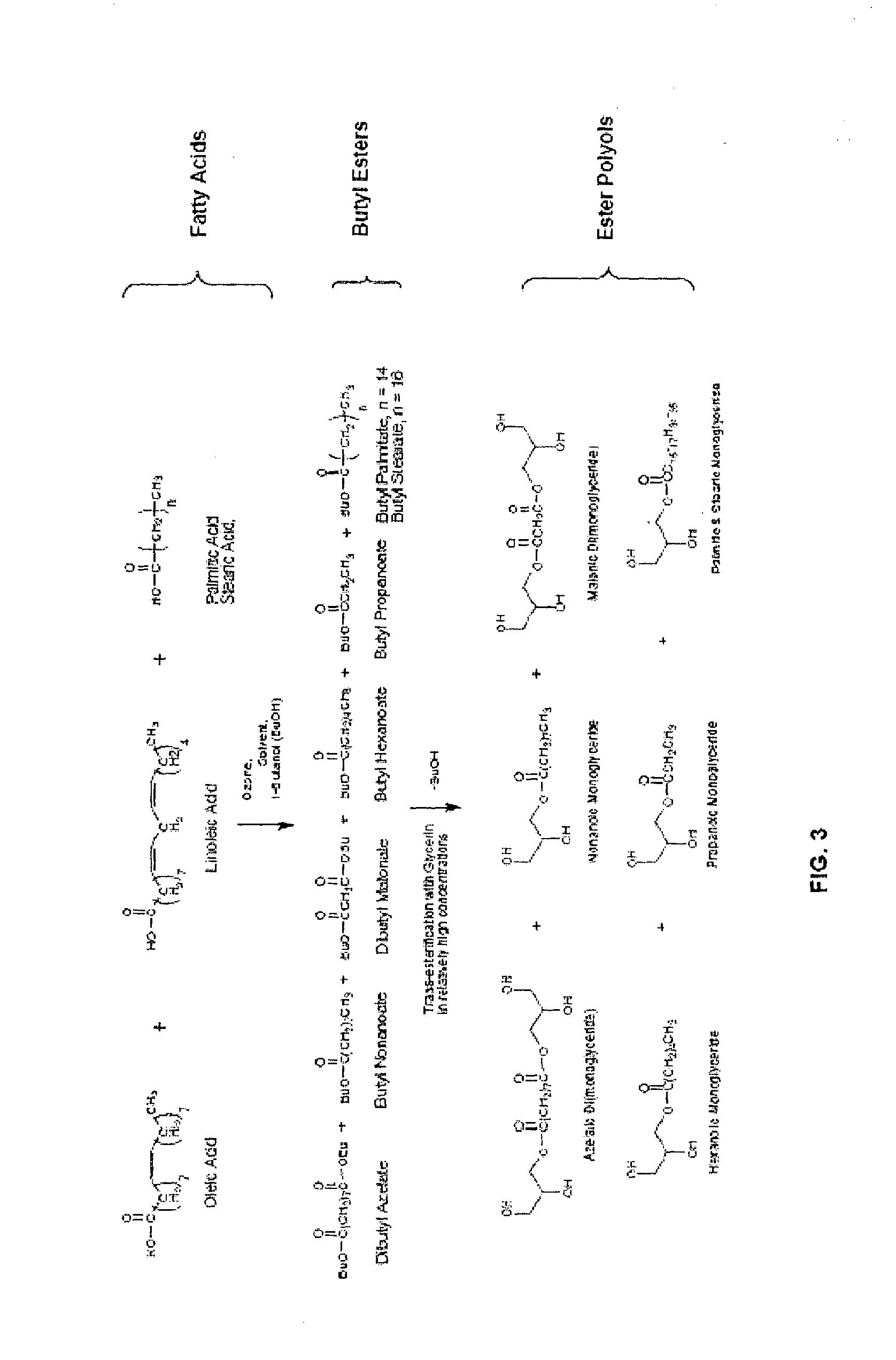Method for the production of esters and uses thereof
a technology of esters and ozone, which is applied in the field of methods for the preparation of esters, can solve the problems of increasing ozone in the second ozonolysis, water reacting with certain intermediates to form unwanted products, etc., and achieves the effect of less expensiv
- Summary
- Abstract
- Description
- Claims
- Application Information
AI Technical Summary
Benefits of technology
Problems solved by technology
Method used
Image
Examples
example 1
Comparative Example
Formation of Ethyl Esters of Soybean Oil with Ethanol (Performed with a Small Ozone Generator)
[0074]This procedure illustrates a conventional ozonolysis that is not benefited by azeotropic distillation. Soybean oil (80 g; 0.4091 mol double bonds; 1.0909 mol reaction sites) was dissolved in ethanol (400 mL; 6.3 equivalents) containing 98% sulfuric acid (2.33 mL; 1 mole per 25 mole reaction sites). Ozone was sparged into the reactor at 2 liters per minute for 9.5 hours at which time initial breakthrough occurred. The reaction was then refluxed for three hours. Ozone was again sparged into the reactor at 2 liters per minute at 60° C. for three hours longer and the reaction was refluxed for three hours when it was determined that acetal was still remaining. Ozone was again sparged into the reactor at 2 liters per minute at 60° C. for two hours longer and the reaction was refluxed for three hours and it was found that 16% acetal still remained. Ozone was again sparged ...
example 2
Formation of Butyl Esters with monoalcohol (1-Butanol)
[0079]This example illustrates the method according to the present invention using a monoalcohol that azeotropes with water (i.e., 1-butanol). Fractionated palm oil fatty acid distillate (250.0 g; 0.914 mol double bonds; 2.7240 mol reaction sites) was dissolved in 1-butanol (875 mL; 3.5 equivalents) containing 98% sulfuric acid (1.45 mL; 1 / 100 mole ratio based on reaction sites). Ozone was sparged into the reactor at 2.5 liters per minute for 3 hours at which time break-through was observed. The reaction was then refluxed using a Dean-Stark tube for 1 hour to remove water. Ozone was again sparged into the reactor at 2 liters per minute for 8 hours with half of the ozone concentration used compared to the first stage ozonolysis. The second stage ozonolysis had a total ozone delivery of 119.8% (based on two moles ozone needed per mole double bond).
[0080]The resulting mixture was then refluxed in a Dean-Stark tube in place for 1.5 h...
example 3
Formation of Butyl Esters with monoalcohol (1-Butanol) and solvent (Butyl Acetate)
[0082]This example illustrates the method according to the present invention using a monoalcohol that azeotropes with water and 1-butanol in the presence of a solvent that azeotropes with water and butyl acetate. Emery Edenor OL 72, a mixture of fatty acids obtained by fractionation of olein by partial removal of saturated fatty acids (300 g; 1.0652 mol double bonds; 3.2186 mol reaction sites) where the olein was dissolved in 1-butanol (590 mL; 2 equivalents) and butyl acetate (295 mL) containing 98% sulfuric acid (2.30 mL; 1 mole per 75 mole reaction sites).
[0083]Ozone was sparged into the reactor at 2 liters per minute for 4.75 hours at which time break-through was observed. The reaction was then refluxed using a Dean-Stark tube for 1 hour to effect water removal. Ozone was again sparged into the reactor at 2 liters per minute for 7.5 hours longer with approximately half of the concentration of the f...
PUM
| Property | Measurement | Unit |
|---|---|---|
| Fraction | aaaaa | aaaaa |
Abstract
Description
Claims
Application Information
 Login to View More
Login to View More - R&D
- Intellectual Property
- Life Sciences
- Materials
- Tech Scout
- Unparalleled Data Quality
- Higher Quality Content
- 60% Fewer Hallucinations
Browse by: Latest US Patents, China's latest patents, Technical Efficacy Thesaurus, Application Domain, Technology Topic, Popular Technical Reports.
© 2025 PatSnap. All rights reserved.Legal|Privacy policy|Modern Slavery Act Transparency Statement|Sitemap|About US| Contact US: help@patsnap.com



